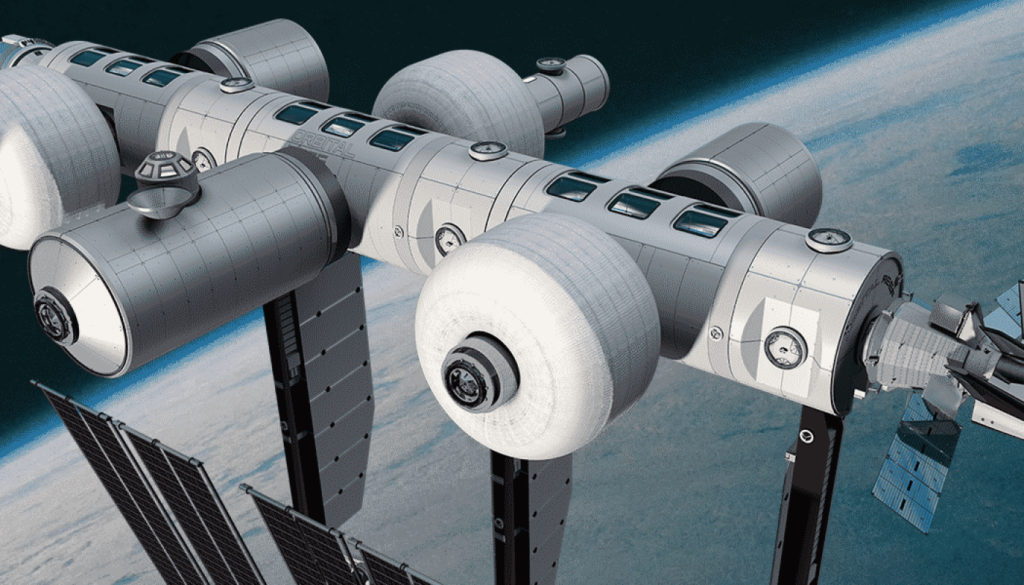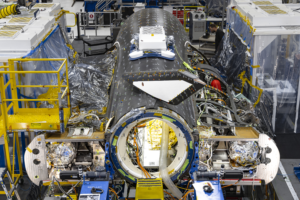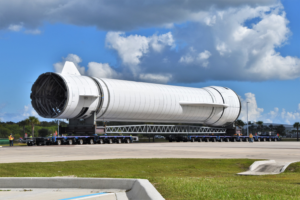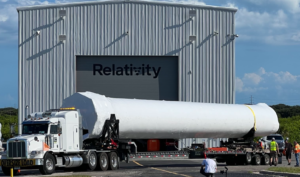
Has Progress Been Made On Orbital Reef?
So many different companies within the space industry are working hard on ambitious ways to access space. Some examples mainly include unique next generation launch vehicles, spacecraft hardware, and so much more. However, there are a few companies that are also working on destinations in space such as Blue Origin and Sierra Space with the Orbital Reef project.
Orbital Reef is meant to be a space station of the future with the goal of being operational by 2027. Specifically, the station will be the premier mixed-use destination in low Earth orbit for commerce, research, and tourism. In order to be successful, big projects including Sierra Space’s LIFE Habitat, Dream Chaser Spaceplane, and Blue Origin’s New Glenn launch vehicle, just to name a few, all need to be working as intended.
This brings up the question of what progress has been made recently with regard to all these different projects. Not to mention the various plans and continued work on the overall Orbital Reef goal and mission going forward. Here I will go more in-depth into some of these crucial projects, what progress has been made, how realistic 2027 is, and more.
Company Progress

The Orbital Reef team includes Blue Origin, Sierra Space, Arizona State University, Boeing, Genesis Engineering Solutions, and Redwire Space. However, the two main contributors toward this station are Blue Origin and Sierra Space. Both companies have specific key elements that they are meant to provide. Starting with Sierra Space, they are responsible for the Large Integrated Flexible Environment (LIFE) module, node module, and runway landing Dream Chaser spaceplane for crew and cargo transportation. Recently, we have seen quite a lot of progress on each of these projects. The LIFE Habitat for example is meant to launch on a conventional rocket and inflate on-orbit to a large structure that is three stories tall, and 27 feet in diameter. Earlier last month, we received an update on this technology with the successful completion of its first Ultimate Burst Pressure test. These modules are expected to be used quite frequently throughout the Orbital Reef station and help provide a good portion of the space within the station. The recent progress is a good sign for the future of the LIFE Habitat and its application to the station.
You then have Dream Chaser which has been very busy in recent months. For a while now we have been given updates on Tenacity, which is the first Dream Chaser test article expected to launch into space and return safely on a runway. In addition, not long ago Sierra Space revealed work on a second Dream Chaser test article that was not Tenacity. The work on multiple test articles at the same time is especially important for progress as a lot of testing will be necessary before any humans get on Dream Chaser. As of right now, the company still has the first uncrewed Dream Chaser Launch with Tenacity apart of the SNC DEMO 1 mission scheduled for early 2023. With it already being October this launch is not far away. In addition to this mission, there are many other uncrewed launches scheduled throughout 2023 and 2024. With the current mission date for the first crewed launch in 2026. This timeline cuts it close as Dream Chaser is meant to be the main mode of transportation to Orbital Reef for humans. However, the result of the upcoming launch attempts will help determine the future timeline and dates. However, all this being said, it looks like most of Sierra Space’s contributions to the station are on schedule and looking good.
You then have Blue Origin, responsible for utility systems, large-diameter core modules, and the reusable heavy-lift New Glenn launch system. Here I will focus on their main contribution which is the next-generation New Glenn launch vehicle. Unfortunately, updates on this rocket from Blue Origin are quite rare. One of the most recent updates on the rocket itself came in the form of a tweet late last year. Here the company tweeted saying, “As #NewGlenn makes progress towards first flight, testing with the GS1 simulator will enable the team to practice ground ops for New Glenn’s massive first stage including the transport from the rocket manufacturing complex to LC-36 for integration.” We know the company since then has been continuing to test this hardware with the goal of learning more prior to the first flight.
In addition to the rocket itself, we have seen somewhat consistent updates on the BE-4 engine, which New Glenn will need 7 of for the first stage. Currently, ULA is only months away from the first launch of Vulcan which uses the BE-4 engine. If this launch is successful and the engines work as intended, it will be a promising step for the future of New Glenn as well. It’s important to point out that Blue Origin will need to make enough BE-4 engines to provide ULA first since they have priority, before New Glenn gets its pick. With all these factors considered, the first test flight of New Glenn is still likely a few years away. Depending on its initial success, this single factor could be the reason for Orbital Reef to be operational on time or delayed quite a bit.
Orbital Reef Overview

Now that we know more about the two main companies’ contributions to Orbital Reef and some of the progress they are making, we can take a closer look at the space station itself and what it plans to offer. Almost one year ago in October of 2021, Sierra Space and Blue Origin announced they would be working together alongside a few other companies to create a commercial space station. Designed to open multiple new markets in space, Orbital Reef is hoping to provide anyone with the opportunity to establish their own address on orbit. The idea is, this unique destination will offer research, industrial, international, and commercial customers the cost competitive end-to-end services they need including space transportation and logistics, space habitation, equipment accommodation, and operations including onboard crew. As partially mentioned prior, they plan for the station to start operating in the second half of this decade.
Orbital Reef will be operated as a “mixed use business park” in space. Shared infrastructure efficiently supports the proprietary needs of diverse tenants and visitors. It features a human-centered space architecture with world-class services and amenities that is inspiring, practical, and safe. Designed to be the premier commercial destination in low Earth orbit, Orbital Reef will provide the essential infrastructure needed to scale economic activity and open new markets in space. Reusable space transportation and smart design, accompanied by advanced automation and logistics, will minimize cost and complexity for both traditional space operators and new arrivals, allowing the widest range of users to pursue their goals. The open system architecture allows any customer or nation to link up and scale to support demand. Module berths, vehicle ports, utilities, and amenities all increase as the market grows.
Not long after this initial announcement, they came out with more news that they were selected by NASA for a funded Space Act Agreement for collaboration to design a commercially owned and operated space station in low Earth orbit. Specifically, in December of last year, NASA signed agreements with three U.S. companies to develop designs of space stations and other commercial destinations in space. One of these companies was Blue Origin which received $130 million. Here, NASA seeks to maintain an uninterrupted U.S. presence in low-Earth orbit by transitioning from the International Space Station to other platforms. These awards are intended to stimulate U.S. private sector development of commercial, independent space stations that will be available to both government and private-sector customers. “Building on our successful initiatives to partner with private industry to deliver cargo, and now our NASA astronauts, to the International Space Station, NASA is once again leading the way to commercialize space activities,” said NASA Administrator Bill Nelson. “With commercial companies now providing transportation to low-Earth orbit in place, we are partnering with U.S. companies to develop the space destinations where people can visit, live, and work, enabling NASA to continue forging a path in space for the benefit of humanity while fostering commercial activity in space.”
Lastly, only a few months ago, the Orbital Reef team, announced they had successfully completed the System Definition Review (SDR) with NASA. The SDR is an important program milestone to establish the functional baseline for Orbital Reef. It demonstrates to NASA that the space station design is feasible and achievable while validating that the Orbital Reef system is on-track to proceed into the design phase. Right now this is what the companies involved are working on in addition to the various company specific projects and contributions.
Conclusion
Orbital Reef is a very ambitious commercial space station project led by Blue Origin and Sierra Space. In terms of progress, right now it looks promising as Sierra Space continues to work on the LIFE Habitat and Dream Chaser, and Blue Origin on New Glenn. However, there still is a lot of work necessary along with some unknowns in terms of future timelines. We will have to wait and see how it progresses and the impact it has on the space industry.



